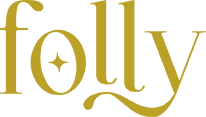Interview with Folly editor, Emily Broadmore
For the New Zealand Festival of the Art
Interview with Folly editor, Emily Broadmore | Aotearoa New Zealand Festival of the Arts
November, 2024
Interview with Folly editor, Emily Broadmore
Folly is an annual print only anthology of art, short stories, non-fiction and poetry produced in Wellington city. Unbound by academic affiliations, fiercely independent, and purposely not high brow, Folly is home to content which it describes as beautiful, sexy, funny, insightful and provocative.
Published in November each year, the 2024 issue has just been launched. I had a chat with Folly's editor, Emily Broadmore about why she chose to create a print journal in an increasingly digital world, how she selects the stories and what readers can expect.
What can readers expect from Folly Journal?
This year's issue leans towards the noir and melancholy, I think because of the economic environment into which it's been born. Submissions had a different tone to last year, there was more retrospective and darkly funny. Although there is still a smattering of typical Folly stories, provocative content, hilarious anecdotes and probably too many swear words.
What inspired you to start Folly, especially as a print publication in an increasingly digital world?
As a writer I was aware of the many beautiful print publications in existence around the world, and particularly in the USA, that print short stories but there was nothing like it in New Zealand. Folly was a solution to this, to create a literary journal that feels light and inviting, something people will flick through over a coffee or take on holiday with them, gift to their friends for Christmas. Our target market aren’t people who would generally know the name of a literary journal; I very purposely set Folly apart as a publication for light relief and reading enjoyment. It isn’t trying to attract a high-brow crowd or please those who deem what is or is not good writing.
How do you think Folly contributes to the literary community?
It’s providing an additional avenue for publication to New Zealand authors – we have so few. But more importantly, its actually encouraging and publishing people who don’t consider themselves writers or haven’t written before. We are creating a community of people who get what we are about – having fun, not taking ourselves too seriously, and celebrating New Zealand writing in a way that isn’t so inward looking (we welcome international submitters too). Most importantly, we are encouraging more people to put pen to paper.
How do you select pieces for publication in Folly?
There is a certain Folly-vibe that our readers look for. Those short, punchy, sexy or provocative pieces that will cause some people to laugh and leave other readers aghast. But around these pieces we are selecting other writing to complement the tone and year in which we are printing – we are asking what is going on in New Zealand this year? What sort of commentary or opinions should we have? The country is very divisive right now, and we have leant into that with the two interviews we carried out (with Aaron Hape and Dame Gaylene Preston) as well as welcoming a deep dive into the New Zealand drug scene with British writer Sean Williams.
Are there specific ways you aim to support emerging writers through Folly?
We invest a significant amount of time into editing and mentoring. Most publications will accept a submission based off the submitted product. We are instead curating a tone, so will work closely with writers to help move their piece towards publication. It’s a lot more intensive, but it creates lasting relationships with our writers and means they are encouraged to keep going with their writing. Lots of submitters from last year are being published this year, for instance. And as an example of mentoring we worked closely with Robbie Siataga on a poem and a short story, going into quite deep edits earlier this year. The final story wasn’t quite right for Folly in the end, but it was published recently on ReadingRoom which made me really proud.
Can you share a memorable piece of writing that influenced you as an editor?
Anything by David Foster Wallace or David Sedaris. I love personal essays and writing that pulls apart people's behaviour.
If writers want to submit to the next issue of Folly, how should they do so?
Submissions will open via Submittable in mid-late January 2025 and will run through to May. Keep an eye on our website www.follyjournal.com and Instagram @folly.journal
Is there anything else you’d like to tell our readers about Folly?
We launched Issue 002 on Friday 8 November, with 150 revellers and supporters through the doors, over the course of twelve hours. A combination of absinthe, burlesque poetry and MixClub music sent the journal off with a disruptive and hedonistic boom.
We are currently holding the Folly Art Auction which closes on 15 November, with proceeds returning to Folly and the artist. We have two pieces by leading NZ artists still available – by New York based Natasha Wright and a mystery piece by Brittany Walker Smith still available through a blind-auction format. We would love people to head to ourwebsite to check the works out. It’s a great opportunity to get your hands on art by these sought after women, knowing the price entirely returns to the artist and independent literature.
We are open to collaborations. If you have some ideas for stories that you want to run past us prior to submitting, we would love to hear from you. Often, with the commissioned pieces, authors will provide us a selection of maybe three works and we will say which one is best suited. This sort of collaborative model is how we enjoy curating Folly.
Find out more on the Folly website and purchase an issue here.

